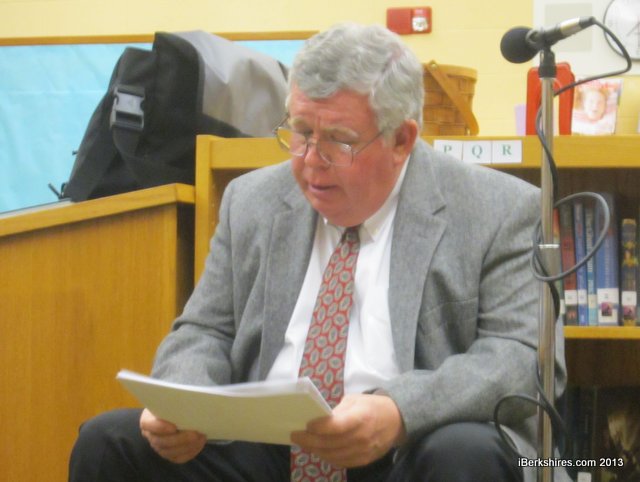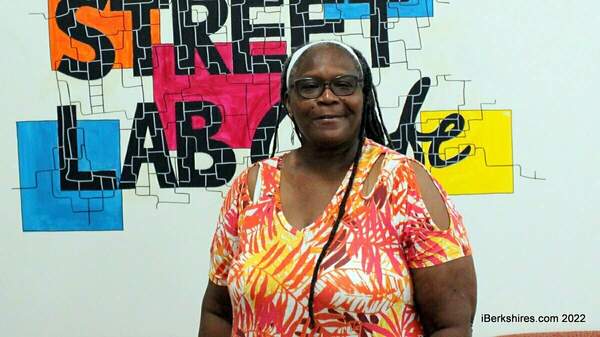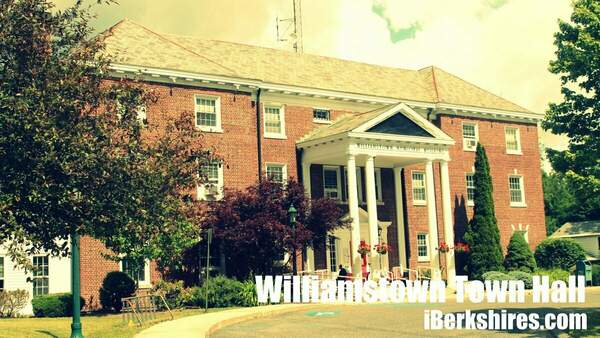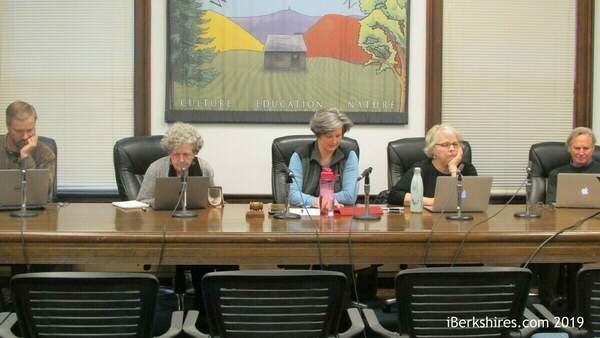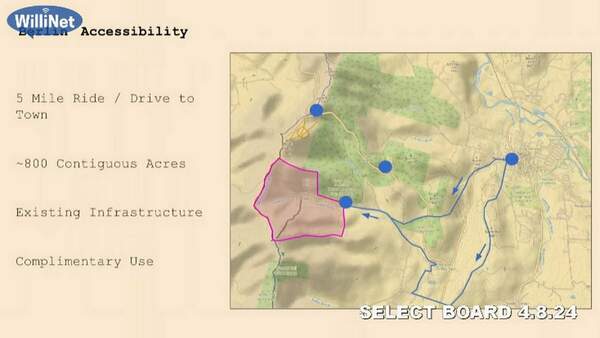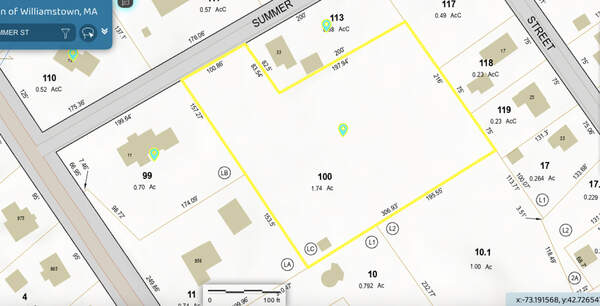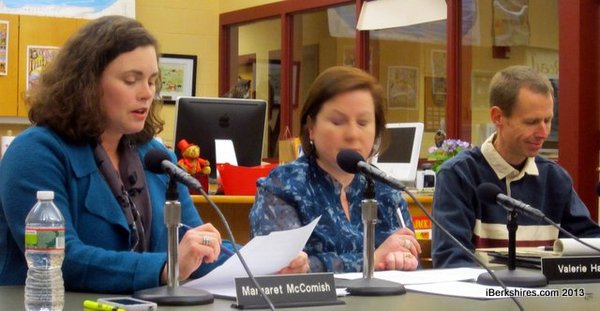
Williamstown School Budget Numbers Up 4 Percent
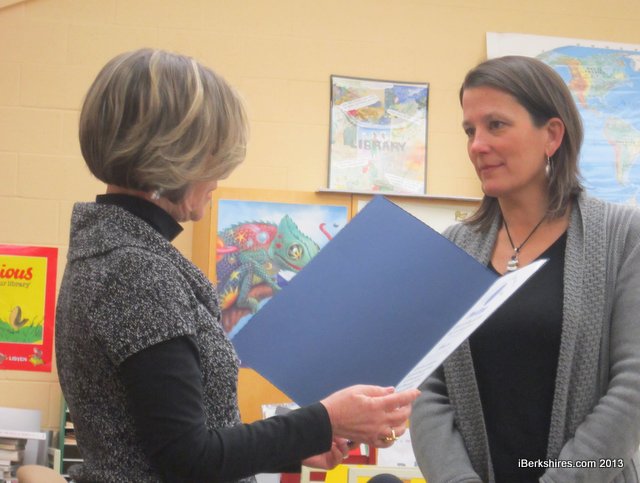 |
|
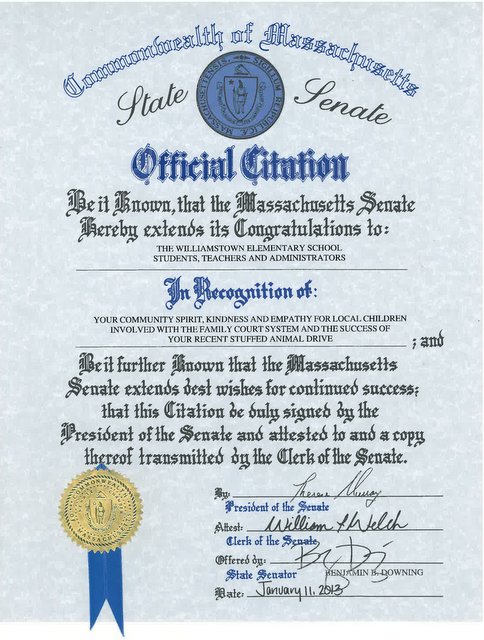 |
Superintendent Rose Ellis presents Principal Joelle Brookner with a citation from the state Senate congratulating the school community on a stuffed animal drive.
|
WILLIAMSTOWN, Mass. — The Williamstown School Committee on Wednesday got its first look at the preliminary budget for fiscal 2014.
The school is facing estimated spending increases in the amount of about $246,000, which would represent a 4 percent increase over 2013 levels.
The school district's business director, David Donoghue, presented the initial budget numbers at the committee's regular monthly meeting, which moved this month to the library of the elementary school.
Not surprisingly, more than half of the proposed increase would come from the largest piece of the $6.3 million budget: salaries for instructional staff.
Wages for regular education and special education teachers and paraprofessionals are projected to rise by 4.2 percent to about $3.5 million. The increase is because of step increases, longevity, cost of living adjustments and educational movement, Superintendent Rose Ellis told the committee.
The other cost centers also would see increases under the proposed budget — ranging from a 3.4 percent rise for the salaries of other staff (a $12,000 rise to $336,0000) to a 12.5 percent rise for transportation costs (a $20,000 increase to $185,000).
The second-biggest cost center in the budget — benefits to employees — is projected to rise by 5 percent ($53,000) to just more than $1 million. But Ellis said the increase (attributable mostly to health insurance) is not as bad as other years.
"That's a small increase for us," she said. "That's amazing. I can actually remember a 26 percent increase [at WES]."
Even with the relatively modest 4 percent overall increase in anticipated expenditures and an expected increase in tax revenues, the district anticipates a shortfall of $118,000.
The town of Williamstown anticipates about a 2.4 percent increase in its appropriation to the school, Ellis told the committee. But even an extra $128,000 from the town over 2013 still will not close the gap.
To make up the difference, the administration proposes drawing on non-appropriated revenues from school-choice students. In the current year, WES has 41 school-choice students, which generate $205,000 in revenue for the district.
Committee member Dan Caplinger, who joined the panel last year, asked Ellis and Donoghue whether a shortfall of $118,000 is at all typical for the district.
Donoghue assured him it was, but Ellis noted Caplinger's concern about the sustainability of the budget is valid.
The good news for the district, she said, is that it has been able to maintain a quality educational environment through difficult budget cycles.
|
The school district's business director, David Donoghue, presented the initial budget numbers. |
"From 2007 to now, we weathered the recession, and it hasn't impacted the school," she said. "We haven't had to reduce staff. It's because we've done the economies of scale.
"We keep our eye on [sustainability] very carefully."
Donoghue stressed the preliminary nature of the budget numbers he provided on Wednesday night.
The School Committee plans a public hearing to discuss updated budget numbers at 6 p.m. on Wednesday, March 16, before its regularly scheduled 7 p.m. business meeting. Representatives of the committee will meet with representatives of the town's Finance Committee to review the budget on March 28, and the WES Committee will cast its final vote on the proposed budget on April 10 before it goes to May's town meeting.
In other business on Wednesday night, the committee appointed two of its members, Caplinger and Chairwoman Margaret McComish, to serve on the new committee exploring expanded regionalization in the Mount Greylock Regional School District. The district is looking to expand to include the K-through-6 schools in Williamstown and Lanesborough, the two towns that currently belong to the 7-through-12 regional district.
The committee also was informed of a special citation from the state Senate recognizing the generosity of WES students in supporting a stuffed-animal drive initiated by two WES alumnae and current Mount Greylock students, Kat Chenail and Emily Kaegi.
Ellis told the committee that the citation came about after Sen. Benjamin B. Downing, D-Pittsfield, read about the toy drive in an article on iBerkshires.com.
Tags: citation, school budget, WES,

.JPG)
